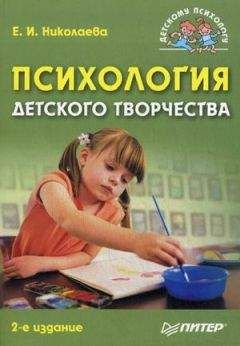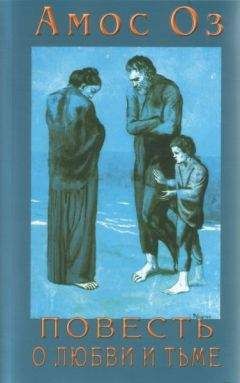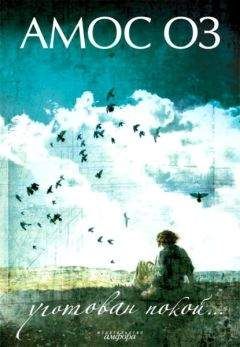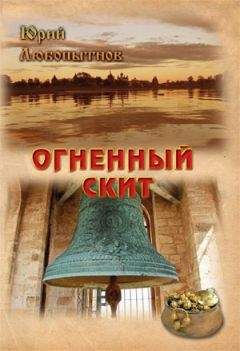Ознакомительная версия.
159. Симерницкая Э. Т. Доминантность полушарий. М.: Изд-во МГУ, 1978.
160. Советский энциклопедический словарь. М.: Советская энциклопедия, 1989.
161. Солсо Р. Л. Когнитивная психология / Пер. с англ. М.: Тривола, 1996.
162. Сонькин В. Д. Теоретические основы физиологии развития // Новые исследования. 2004. № 1–2. С. 360.
163. Стернберг Р., Григоренко Е. Л. Учись думать творчески // Основные современные концепции творчества и одаренности / Ред. Д. Б. Богоявленская. М.: Молодая гвардия, 1997.
164. Стернберг Р., Григоренко Е. Л. Модель структуры интеллекта Гилфорда: структура без фундамента // Основные современные концепции творчества и одаренности / Ред. Д. Б. Богоявленская. М.: Молодая гвардия, 1997. С. 111–127.
165. Сухомлинский В. А. Сердце отдаю детям. Киев: Радянська школа, 1974.
166. Теплов Б. М. Способности и одаренность // Проблемы индивидуальных различий. М.: Изд-во АПН РСФСР, 1961(б). С. 9–20.
167. Теплов Б. М. Психология музыкальных способностей // Проблемы индивидуальных различий. М., Л.: Изд-во АМП РСФСР, 1961. С. 39–251.
168. Теплов Б. М. Психологические вопросы художественного воспитания. М.: Просвещение, 1947. Вып. 11. С. 16–17.
169. Тинякова Е. А. Катя Тинякова. Крупицы детского творчества. Курск, ГУИПП, 1997. С. 49–52.
170. Тихомиров О. К. Психология мышления. М.: Изд-во МГУ, 1984.
171. Тихомирова Т. Н. Влияние семейной микросреды на способности детей: роль поколений // Психология. Журнал высшей школы экономики. 2004. Т. 1, № 4. С. 133–141.
172. Трубачев С. Музыкальный мир П. А. Флоренского// Советская музыка. 1988. № 8. С. 81–89.
173. Узнадзе Д. Н. Психологические исследования. М.: Наука, 1966.
174. Ушаков Д. В. Мышление и интеллект // Психология XXI века / Ред. В. Н. Дружинин. М: ПЕР СЭ, 2003. С. 291–353.
175. Ушаков Д. В. Интеллект: структурно-динамическая теория. М.: ИП РАН, 2003.
176. Ушаков Д. В. Тесты интеллекта, или Горечь самопознания // Психология. Журнал высшей школы экономики. 2004. Т. 1, № 2. С. 76–93.
177. Ушакова Т. Н. Речь: истоки и принципы развития. М.: ПЕР СЭ, 2004.
178. Ушинский К. Д. Собр. соч.: В 8 т. Т. 8. М; Л.: Изд-во АПН РСФСР, 1950. С. 439.
179. Учитель. Журнал для наставников, родителей и всех желающих заниматься воспитанием и обучением детей, издаваемый И. Паульсоном и Н. Весселем. СПб.: Изд-во Сытина, 1862.
180. Фарбер Д. А. Динамика полушарной асимметрии ЭЭГ в онтогенезе // Современные проблемы нейробиологии. Тбилиси, 1986. С. 367–372.
181. Фарбер Д. А., Бетелева Т. Г., Мачинская Р. И. Возрастные особенности функциональной специализации полушарий при когнитивной деятельности // Актуальные вопросы функциональной межполушарной асимметрии. М.: Изд-во НИИ мозга РАМН, 2003. С. 317–318.
182. Фрейд 3. Психология бессознательного: Сб. произведений. М.: Просвещение, 1989.
183. Фрейд 3. Я и Оно. Труды разных лет / Пер. с нем. Кн. 1. Тбилиси: Мерани, 1991.
184. Хазратова Н. В. Экспериментальное изучение формирующего влияния микросреды на креативность // Психологический журнал. 1994. № 4. С. 83–93.
185. Хамори И. Долгий путь к мозгу человека. М.: Мир, 1985.
186. Хейзинга И. Homo ludens. В тени завтрашнего дня / Пер. с гол. М.: Прогресс; Прогресс-Академия, 1992.
187. Холодная М. А. Психология интеллекта: парадоксы исследования. Томск: Изд-во Томск, ун-та; М.: Изд-во «Барс», 1997.
188. Хомский Н. Язык и мышление. М.: Наука, 1972.
189. Хомский Н. Синтаксические структуры // Новое в лингвистике. 1962. Вып. 2. С. 465–576.
190. Черникова Н. А. Психологическая характеристика литературного творчества младших школьников. М.: Педагогика, 1960.
191. Чернявская И. С. Эстетическое воспитание школьников и культура слова. М.: Просвещение, 1982.
192. Чубук Н. Ф. Герой детского литературного творчества: две основные формы воплощения // Мир психологии. 2002. № 1. С. 142–151.
193. Чудновский В. Э., Юревич В. С. Одаренность: дар или испытание. М.: Знание, 1990.
194. Чуковский К. И. От двух до пяти. М.: Детская литература, 1966.
195. Шабельников В. К. Творчество – это действие или деятельность? // Культурно-исторический подход и проблемы творчества / Под ред.
Е. Е. Кравцовой, В. Ф. Спиридонова, Ю. Е. Кравченко. М.: РГГУ, 2003. С. 158–165.
196. Шадриков В. Д. О содержании понятий «способность» и «одаренность» // Психологический журнал. 1983. Т. 4, № 5. С. 3–10.
197. Шадриков В. Д. Деятельность и способности. М.: Логос, 1994.
198. Шнеерсон Г. М. О письмах Шенберга // Музыка и современность. Сб. ст. Вып. 4. М.: Музыка, 1966. С. 330–401.
199. Штерн В. Психология раннего детства / Пер с нем. СПб.: Изд-во Сытина, 1915.
200. Шоттенлоэр Г. Рисунок и образ в гештальттерапии / Пер. с нем. СПб.: Издательство Пирожкова, 2001.
201. Эльконин Д. Б. Психология игры. М.: Педагогика, 1978.
202. Ярошевский М. Г. Психология творчества и творчество в психологии/ Вопросы психологии. № 6. 1985. С. 14–26.
203. Amabile Т. М. Children's artistic creativity: Detrimental effects of competition in a field setting // Personality and Social Psychology Bulletin. 1982. V.8. P. 573–578.
204. Amabile Т. М. Beyond Talent: John Irving and the Passionate Craft of Creativity // American Psychologist. 2001. V. 56, N4. P. 333–336.
205. Andress B. Toward an integrated development theory for early childhood education // Council for research in music education: Bulletin. 1989. N86. P. 10–17.
206. Artley N. L., Van-Horn R., Friedrich D. D., Carroll J. L. The relationship between problem finding, creativity and cognitive style // Creative Child and Adult Quarterly. 1980. V. 5. P. 20–26.
207. Bambarger J. The mind behind the musical ear // How children develop musical intelligence. Cambridge, London: Harvard University Press, 1991.
208. Berry C. The Nobel scientists and the origins of scientific achievements // British Journal of Sociology. 1981. V. 32. P. 381–391.
209. Bowers K. S., Regher G., Balthazard C, Parker K. Intuition in the context of discovery // Cognitive Psychology. 1990. V. 22. P. 72–110.
210. Bruner J. Nature and uses of immaturity // American Psychologist. 1972. N 8. N. 35.
211. Bruner J. Play // Prospects. 1986. № 1. P. 48.
212. Butcher J. L., Niec L. N. Disruptive Behaviors and Creativity in Childhood: The Importance of Affect Regulation. Creativity Research Journal. 2005. V. 17, N 2–3. P. 181–193.
213. Campbell D. T Blind variation and selective retention in creative thought processes. Psychological Review. 1960. V. 67. P. 380–400.
214. Carlsson I. Anxiety and Flexibility of Defense Related to High or Low Creativity // Creativity Research Journal. 2002. V. 14, N 3–4. P. 341–349.
215. Carson D. К., Bittner M. Т., Cameron D. M., Brown B. R., Meyer S. S. Creative thinking as a predictor of school-aged children's stress responses and coping abilities. Creativity Research Journal. 1994. V. 8. P. 145–158.
216. Charles R. E., Runco M. A. Developmental Trends in the Evaluative and Divergent Thinking of Children // Creativity Research Journal. 2001. V. 13, N. 3–4. P. 417–437.
217. Claxton A. E, Pannells Т. С, Rhoads P. A. Developmental Trends in the Creativity of School-Age Children // Creativity Research Journal. 2005. V. 17, N. 4. P. 327–335.
218. Csikszentmihalyi M. Implications of a Systems Perspective for the Study of Creativity // Handbook of Creativity / ed. by R. Sternberg. Cambridge: Cambridge University Press, 1999. P. 313–335.
219. Cobb E. The ecology of imagination in childhood. N. Y. Columbia University Press, 1977.
220. De Casper A. J. Human bonding: Newborn prefer their mother's voices // Sciences. 1980. V. 208. P. 233–239.
221. Demorest S. M., Serling R. С The integration of pitch and rhythm in musical judgment: Testing age-related trends in novice listeners // Journal of Research in Music Education. 1997. V. 45, N 1. P. 67–79.
222. Davis, J. Drawing's demise: U-shaped development in graphic symbolization. Unpublished manuscript, Harvard Project Zero, Harvard University Cambridge, MA, 1993.
223. Feldman, D. H. Nature's gambit: Child prodigies and the development of human potential. New York: Teachers College, Columbia University, 1991.
224. Frank В., Harrington D. M. Creativity, Intelligence and Personality // Annual Review of Psychology. 1981. P. 439–476.
225. Galdikas-Brindamour B. Orangutans, Indonesia's People of the Forest // National Geographic. 1975. V. 148, N 4. P. 445–474.
226. Gardner H. Art, mind, and brain: A cognitive approach to creativity. New York: Basic Books, 1982.
227. Garlick D. Understanding the Nature of the General Factor of Intelligence: The Role of Individual Differences in Neural Plasticity as an Explanatory Mechanism // Psychological Review. 2002. V. 109, N 1. P. 116–136.
228. Golom С. The Child' s creation of a pictorial word. Los Angeles, CA: University of California Press, 1992.
229. Golomb С. Young children's Sculpture and Drawing. A study in Representational Development. Cambridge, Massachusetts: Harvard University Press, 1974.
230. Goodenough E L. Measurement of Intelligence by drawings. N. Y: Harcourt, Blace and World, 1926.
231. Griffin M., McDermott M. R. Exploring a tripartite relationship between rebelliousness, openness to experience and creativity // Social Behavior and Personality. 1998. V. 26. P. 347–356.
232. Groves M. M., Sawyers J. К., Moran J. D. III. Reward and Ideational Fluency in Preschool Children. Early childhood research quarterly. 1987. V. 2. P. 335–340.
233. Gourlay K. A. The non-universality of music and the universality of nonmusic // The world of music. 1984. V. 26. N 2.
234. Guencer В., Oral G. Relationship between creativity and nonconformity to school discipline as perceived by teachers of Turkish elementary school children, by controlling for their grade and sex // Journal of Instructional Psychology. 1993. V. 20. P. 208–214.
235. Hall E. G. Longitudinal measures of creativity and achievement for gifted IQ groups // Creative Child and Adult Quarterly. 1985. V. 10. P. 7–16.
236. Harlow H. E Learning to love. San-Francisco, 1971.
237. Huizinga J. Homo ludens Versuch einer Bestimmung des Spielelememts der Kultur. Reinbek bei Hamburg, 1956. S. 39.
238. Jung R. E., Haier R. J. The Parieto-Frontal Integration Theory (P-FIT) of intelligence: Converging neuroimaging evidence // Behavioral and brain sciences. 2007. V. 30. P. 2–147.
239. Klosovskij B. N. The development of the brain and its disturbance by harmful factors. New York, 1963.
240. Lau S., Li W. L. Peer status and perceived creativity: Are popular children viewed by peers and teachers as creative? // Creativity Research Journal. 1996. V. 9. P. 347–352.
241. Maddi S. Creativity is strenuous // The University of Chicago Magazine. 1973. V. 66. N 2. P. 18–23.
242. Maddi S. Creativity and Health: Do the Gods Give Two Good Things to One Person. Presidential Address, АРА Division 10 (Psychology and the Arts), АРА Meeting, Washington, D. C., August 1982.
243. Milgram, R. M. Creative out-of-school activities in intellectually gifted adolescents as predictors of their life accomplishments in young adults: A longitudinal study. Creativity Research Journal. 1989. V. 12. P. 77–88.
244. Moneta, G. В., Siu, С М. Y. Trait intrinsic and extrinsic motivations, academic performance, and creativity in Hong Kong college students // Journal of College Student Development. 2002. V. 43. P. 664–683.
245. Moran J. D. Creativity in Young Children / Creativity, Intelligence and Personality // Annual review of psychology. 1981. V. 32. P. 61–72.
246. Moran J. D. III, Milgrim R. M., Sawyers J. K., Fu V. R. Original Thinking in Preschool Children // Child development. 1983. V. 54. P. 921–926.
247. Neubauer A. C, Grabner R. H., Freudenthaler H. H., Beckmann J. E, Guthke J. Intelligence and individual differences in becoming neurally efficient // Acta Psychologica. 2004. P. 55–74.
248. Ong W. J. Orality and literacy// The technologazing of the Word. Bristol, 1982.
249. Pariser D., van den Berg A. Universal trajectory or modernist artifact? A preliminary cross-cultural test of Gardner's hypothesis of U-curved aesthetic development. Paper presented at the meeting of the American Psychological Association, New York, 1995.
Ознакомительная версия.




